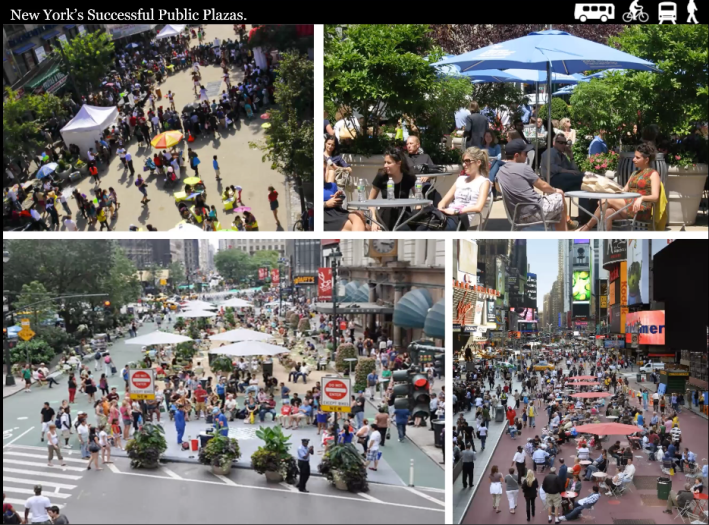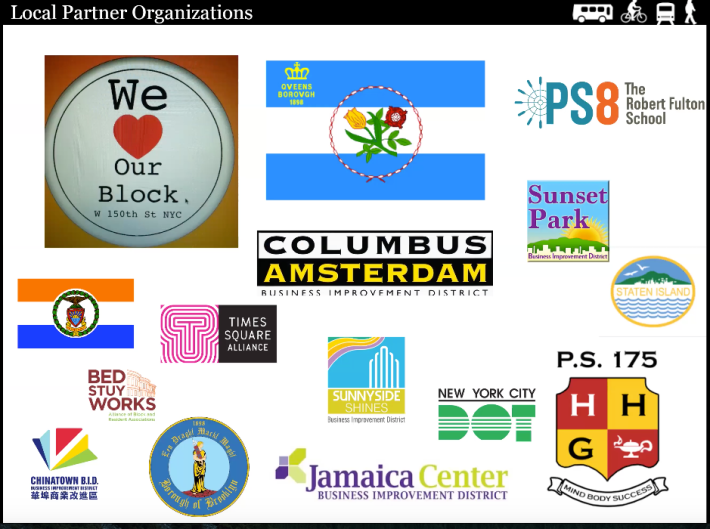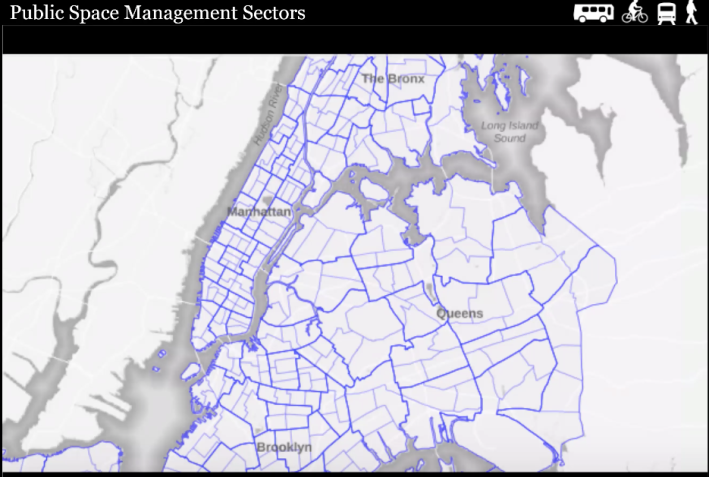If New York City is to realize the promise of open streets — and not burn out the legions of volunteers who bravely rose to staff them during the pandemic — it needs to professionalize the management of the great public spaces it created during the pandemic.

That was the message of a wide-ranging discussion Thursday night (for a video, click here) spearheaded by Streetsblog Publisher Mark Gorton, who has been pushing the creation of an "Office of Public Space Management," which, he argues, is necessary so that the city will assume responsibilities it has shirked for pretty much ever.
For the last 50 to 100 years, "the Department of Transportation and its predecessors have managed the streets almost exclusively as a transportation-oriented road network," Gorton said at the event, dubbed, "What If We Managed Streets as Places?"
As a result, new DOT programs that emerged during the pandemic to keep the populace and businesses alive and sane — Open Streets, Open Restaurants, Open Culture — "have struggled to succeed," Gorton said. "We need the city to build a regulatory framework to have our streets function as places because livable streets simply don't have to be that hard."
The city has had success with its public plazas, including Times and Herald squares, but each is managed by a business-improvement district, which fund their maintenance with a self-imposed tax on local landlords. Such a scheme is less than ideal because BIDs cover only 2 percent of the city, and are located mostly in rich business districts — but every street, including those in residential areas, but especially those in poorer neighborhoods, needs public-space management.
"Most people in DOT don't even understand that public-space management is a profession," Gorton said.

The lack of oversight of streets as places has resulted in an "anarchy, a free-for-all" that has only gotten worse as more users — including the freight-deliverers of burgeoning e-commerce, deliveristas on e-bikes, assisted-mobility users, and users of micro-mobility devices — are jostling for space in streets that for decades have been dominated by private vehicles.
The growing complexity of the streetscape means that "public-space management can't be done from a central bureaucracy; it has to be done from someone on the ground, in the streets, working with the community," Gorton said.
There are dozens of professional disciplines involved in maintaining streets as places — including community planning, public safety and services, cleanliness and trash management, programming and event facilitation, street-furniture management, school-street management, vehicular management, planting facilitation, street design, maintenance (including street, sidewalk and lighting repair), vendor management, and parking management, among others — but the city "for the most part has abdicated that responsibility in favor of the lowest use: long-term car storage."
That framework consists of five elements, in Gorton's view:
- An Office of Public Space Management, meaning an agency focused exclusively on the task, not merely a division of a larger agency such as DOT, whose main mission is moving cars and trucks around.
- Each community board would be divided into five sectors — much as police precincts are now — each staffed by a paid, full time, space manager
- The promulgation of a street hierarchy, which would designate some streets as truck routes, others as bus network streets, bike boulevards, or open streets, etc.
- The creation of clear guidelines for treatments and uses on each kind of street
- An end to the official oppression of people-related activities by the DOT and the Street Activity Permits Office, both of which privilege the activities of motorists above all other street users and throw up myriad obstacles to people who are trying to make things happen in their little corners of the world.
Gorton pointed out that there is broad support for a new system for dealing with open space. Open Plans strategists have presented the Public Space Management proposal to at least seven Council members or their staff — Steve Levin, Antonio Reynoso, Carlina Rivera, Danny Dromm, Justin Brannan, Keith Powers, and Laurie Cumbo. The reception has been favorable, but no legislation has materialized. Viewers were asked to appeal to their local electeds.
The role of the professional public-space manager would be to create the framework to tap into volunteer energies, and, in turn, to help the neighborhood navigate the city bureaucracy.

The DOT's role as the creator of a clear classification of streets and rules for each kind is "super important," Gorton said. Public-space management is not some utopian idea, but one that catalyzes public energies in appropriate venues.
"Not all streets in the city are the same," he said. "Some roads are important as traffic conduits. As much as I would like to see people-oriented streets everywhere, New York has a certain necessary amount of traffic, and we need streets to function as part of the truck network, the bus network and the bike network."

The hunger for people-oriented streets is real and pressing, and "if we do these things, we will make New York City so much better than before," Gorton said. If we don't, private groups will fill the vacuum in some places, but not others — creating a profoundly inequitable situation that will stifle the growth and promise of many communities so sadly affected by the pandemic.
Other panelists brought experiences from "the trenches" of open streets. Sophie Maerowitz, who has led the open streets volunteer effort on the Lower East Side, spoke of the joys of applying tactical urbanism in her diverse neighborhood, whether that was to facilitate a street mural or a Zumba class. But those joys are limited because motorists make things so difficult — with some destroying barricades and even threatening open-streets volunteers. Volunteer exhaustion remains an ongoing issue for the open streets of the neighborhood.
That's certainly an issue on 34th Avenue in Jackson Heights as well, where Jim Burke has been leading an effort of scores of volunteers who have to deploy and break down the barricades every single day between Junction Boulevard and 69th Street, about 1.5 miles.
But it's all worth it, Burke said, describing the human connections fostered on his open street, often called the "gold standard" by the DOT. Burke said he met and befriended neighbors whom he had never gotten to know, even though they lived in his building for 20 years. He also credits the open street with helping him meet people from all walks of life, such as short-order cooks and deliveristas.
"The diversity of my friends has definitely increased," he said. "Instead of living in an anonymous city, it has made a small town in a big city."
It's unclear what the future of Gorton's proposal is, given that only one mayoral candidate, Maya Wiley, has explicitly called for an Office of Public Space, and the issue of public space, and transportation equity in general, has been absent in all of the mayoral debates thus far. Several candidates have signed onto Transportation Alternatives' "NYC 25X25" plan to reclaim 25 percent of roadway space back from car drivers, but no candidate has put together a specific route to getting there beyond expanding bike and bus lanes, which would add to public space in tiny increments.
Even if there's no plan now, there likely will be, said Mike Lydon, the city planner who introduced Gorton before the night's discussion. If you follow New York City politics, Lydon said, "Mark is a couple of election cycles ahead, but the city catches up."






